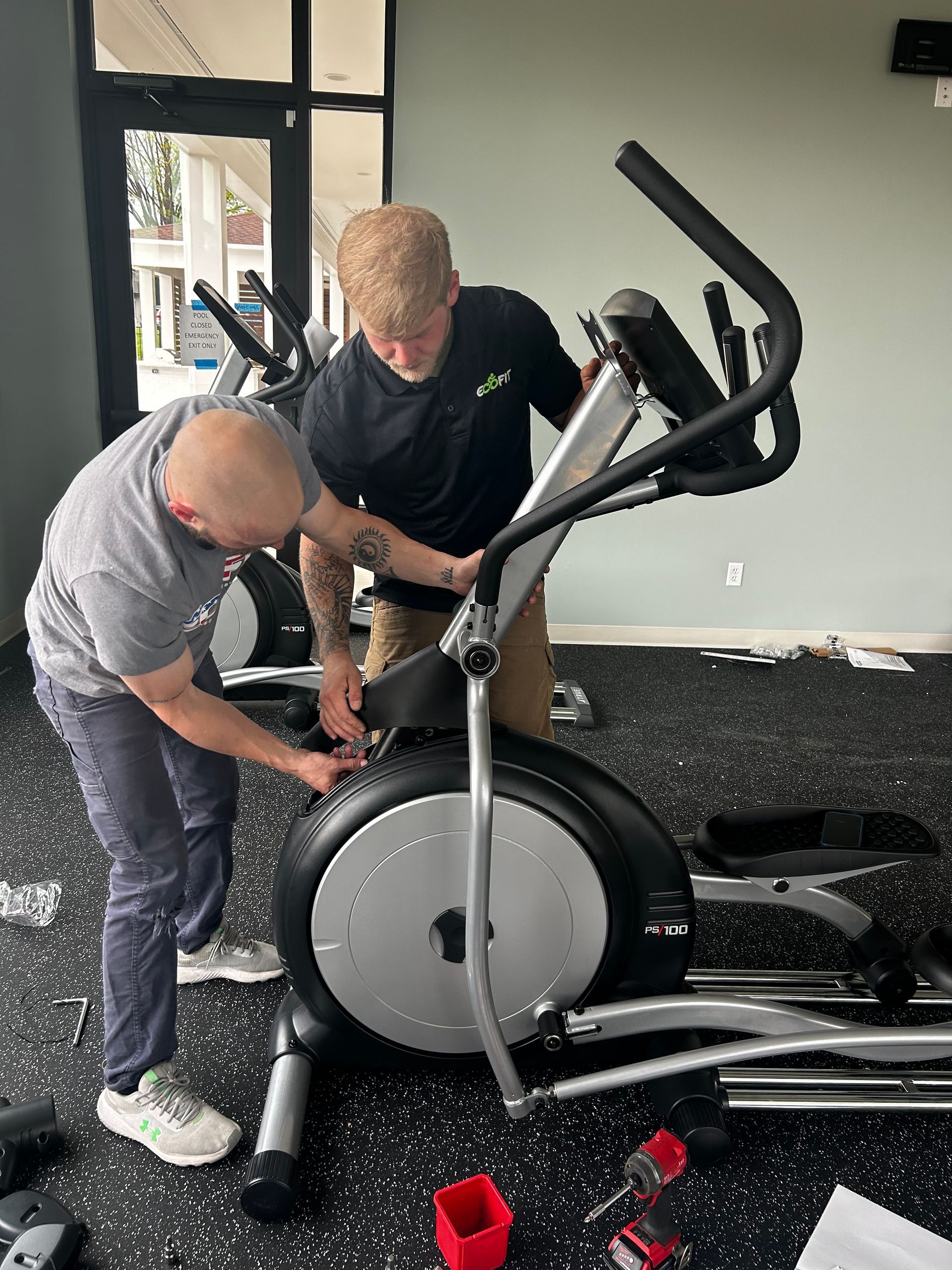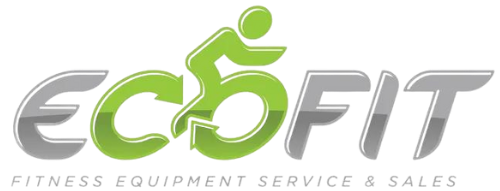Creating Fitness Spaces for Active Aging: How Senior Living Communities Can Support Health & Wellness with the Right Equipment
If you manage or operate a senior living community, you already know how important wellness is to your residents. Today’s seniors are more active, more engaged, and more health-conscious than ever before. They’re looking for more than just a comfortable place to live—they’re looking for a community that supports an active, independent lifestyle.
That’s where a thoughtfully designed fitness space comes in.
Adding or upgrading a fitness center in your senior living facility isn’t just a nice-to-have. It’s a powerful investment in resident satisfaction, safety, and long-term health. Whether you’re building from the ground up, renovating an underused space, or expanding your wellness programming, EcoFit can help you create a safe, functional, and welcoming fitness area tailored to older adults.
Let’s walk through what makes a great senior fitness center—and how the right equipment partner can make all the difference.
Why a Fitness Center Matters in Senior Living Communities
We get it—fitness centers aren’t traditionally associated with retirement. But that’s changing fast.
Today’s residents want to move. They want to stay healthy, maintain independence, and enjoy the activities they love for as long as possible. Physical activity isn’t just about aesthetics or “staying in shape.” It’s about:
- Preventing falls and injury
- Improving mobility and balance
- Managing chronic conditions like arthritis, diabetes, or high blood pressure
- Reducing feelings of isolation or depression
- Increasing quality of life
The research backs this up—seniors who engage in regular physical activity live longer, are more independent, and are far less likely to suffer from preventable complications. And when that activity happens within your facility? It builds community, strengthens resident relationships, and keeps your care team connected with what your residents need.
Not All Fitness Equipment Is Designed with Seniors in Mind
This is a big one. The equipment you choose can either encourage safe, consistent use—or leave your residents intimidated and at risk of injury.
At EcoFit, we specialize in helping communities choose equipment specifically designed for older adults. That means:
- Low step-up heights
- Easy-to-read controls
- Stability grips and handrails
- Low-resistance starting points
- Seat belts or secure seating when appropriate
- Quiet, smooth operation that won’t disrupt shared spaces
The goal isn’t just to give residents access to equipment. It’s to give them the confidence to use it. That’s where design really matters.
Popular Equipment Choices for Senior Living Communities
You don’t need 20 treadmills and a massive weight room to build an effective senior fitness space. In fact, smaller, well-curated spaces are often more welcoming.
Here’s what we often recommend:
1. Recumbent Bikes and Seated Ellipticals
These machines offer low-impact cardio with back support, making them ideal for residents with balance issues or joint pain.
2. Resistance Machines with Adjustable Weight
Selectorized machines are safer than free weights and allow for strength training in a controlled range of motion. Look for models with wide seats, clear instructions, and user-friendly adjustments.
3. Balance and Stability Tools
Balance pads, wobble boards, and functional trainers with handles can help improve stability and reduce fall risk.
4. Stretching and Mobility Stations
Don’t overlook recovery. Flexibility equipment, yoga mats, foam rollers, and mobility stations encourage range of motion and muscle maintenance.
5. Group Exercise Accessories
Resistance bands, light dumbbells, and medicine balls are perfect for instructor-led or independent group classes.
6. Smart Equipment with Progress Tracking (Optional)
Some communities opt for digital equipment that tracks workouts, adjusts automatically to each user, or syncs with resident wellness programs.
Not sure what to prioritize? That’s what we’re here for. We’ll guide you based on your residents’ abilities, your available space, and your budget.
How Much Space Do You Really Need?
You might be surprised how little space it takes to build a safe and effective fitness area. We’ve helped communities convert unused lounges, storage areas, and even wide hallways into compact fitness zones that residents love.
On average, a basic setup takes 400–800 square feet. That’s enough space for 4–6 key pieces of equipment, a stretching area, and a small group class zone. If you have more room, we’ll help you expand thoughtfully. If you’re tight on space, we’ll get creative.
And yes—we’ll walk the space with you. We’ll evaluate your layout, lighting, flooring, and flow to make sure it’s all safe, ADA-accessible, and optimized for residents with walkers, canes, or wheelchairs.
Leasing vs. Buying: What Makes the Most Sense for Senior Communities
Fitness equipment can be an investment—but you don’t have to take on that cost all at once.
Many of our senior living partners choose to
lease their equipment through EcoFit, and here’s why:
- Lower upfront costs
- Includes regular servicing and maintenance
- Easier to upgrade as resident needs evolve
- Peace of mind knowing repairs are covered
If you’d prefer to own your equipment outright, we’ll help you do that too—with smart options, not overselling. We work with top commercial-grade manufacturers and offer equipment that’s built to last, even with frequent use.
And if you're not sure which model to go with, we can structure a lease-to-own plan that allows you to test out what works best before committing long term.
Ongoing Servicing = Long-Term Safety and Satisfaction
No matter how good your equipment is, it needs to be maintained—especially in senior spaces. Loose bolts, worn belts, or stiff adjustments can cause frustration at best, and injuries at worst.
We offer full-service maintenance programs designed to keep your fitness area in perfect condition, including:
- Routine maintenance visits
- Inspection of all equipment for safety and function
- Emergency repair services
- Fast replacement of parts
- Friendly support you can call any time
That means you and your team never have to worry about “what if something breaks?” It also keeps your residents safe, happy, and confident.
Don’t Just Install Equipment—Build a Wellness Culture
A fitness center is just the beginning. To really get residents engaged, think about how to build movement into your community’s daily rhythm.
Some ideas we’ve seen work really well:
- Schedule beginner-level group classes (chair yoga, balance, or stretching)
- Create a wellness challenge that encourages friendly competition
- Post daily workout ideas or guided routines
- Train staff members to encourage residents to try equipment safely
- Celebrate milestones—10 sessions completed, progress on mobility, etc.
When movement becomes a part of your community’s lifestyle, it shows. You’ll see more residents taking initiative, socializing, and staying active together.
Why Senior Living Communities Choose EcoFit
We’ve worked with dozens of residential communities across the country—from independent living to full-service care. And we know that every one of them is different.
Here’s what you can expect when you partner with EcoFit:
- Personalized planning from day one
We visit your facility (or study your plans), get to know your residents’ needs, and create a tailored equipment plan that fits your space and your goals. - Equipment designed for seniors
We don’t just sell fitness gear. We recommend the pieces that make sense for your population—safe, easy to use, and backed by commercial warranties. - Flexible leasing or purchasing
Whether you’re looking for a simple refresh or a full-scale wellness center, we’ll help you get there on your budget and timeline. - Ongoing support and servicing
We’re not a drop-and-run partner. We stay involved with ongoing maintenance, updates, and check-ins to make sure everything keeps running smoothly. - A focus on resident experience
We know your end goal isn’t just equipment. It’s happier, healthier residents—and we’re here to help you deliver that every day.
Let’s Talk About Your Fitness Center Plans
Whether you’re still in the early stages or ready to break ground, we’d love to be part of your project. EcoFit offers a free onsite evaluation where we’ll walk your space, talk through your vision, and help you build a plan that works.
From layout to leasing, installation to maintenance, you’ll have a trusted partner at every step.
Reach out today to schedule your fitness consultation. Let’s build a space your residents will use, love, and thank you for.
Contact Us






